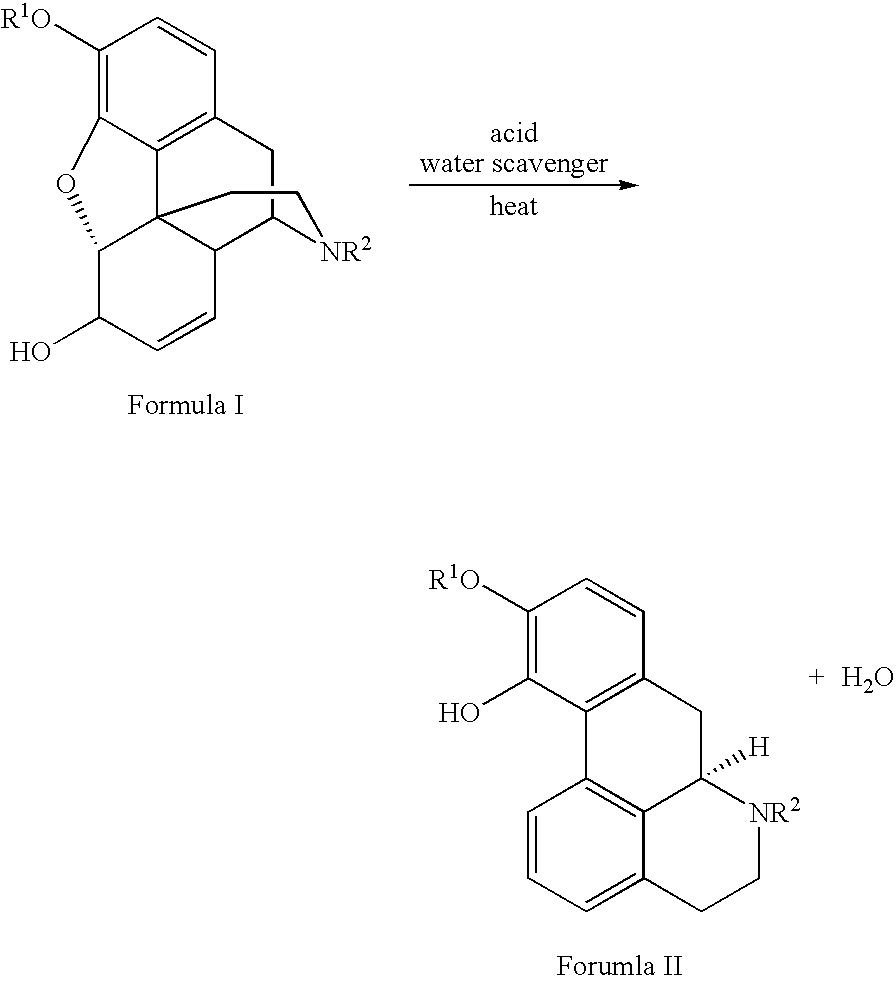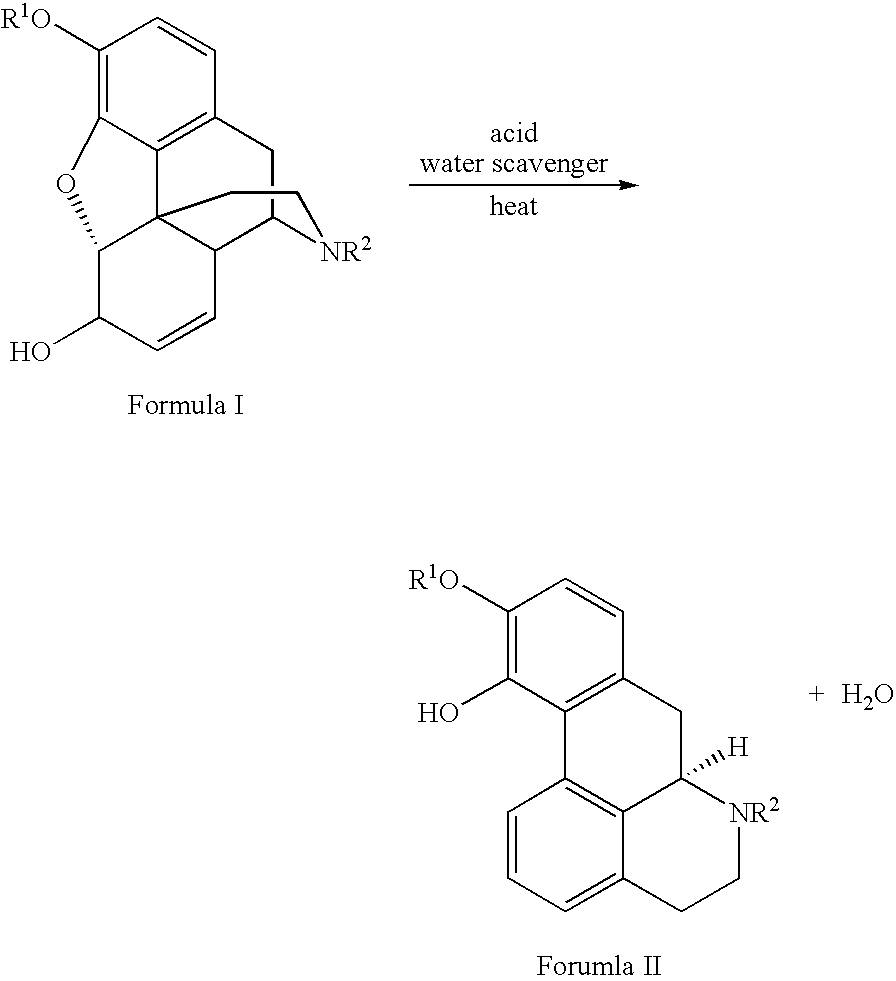Process for Making Apomorphine and Apocodeine
a technology applied in the field of apomorphine and apocodeine, can solve the problems of poor yield of each of these procedures, limited reaction, and 6% to 46%
- Summary
- Abstract
- Description
- Claims
- Application Information
AI Technical Summary
Problems solved by technology
Method used
Image
Examples
example 1
Production of Apomorphine
[0017]A mixture of morphine monohydrate (1.00 g), phosphoric acid (5.01 g) and phosphorus pentoxide (0.48 g) was heated gradually to between 90° C. and 100° C. under an inert atmosphere. The resulting solution was stirred at that temperature for 2 hours to provide apomorphine in 63.22% unisolated yield. Pure apomorphine hydrochloride salt was isolated by subjecting the reaction mixture to hydrolysis, salting out, pH adjusting to liberate free base, extraction of free base and conversion into hydrochloride salt. MS data: [M+H]=268. H1 and C13 NMR data substantiated the structural assignment of apomorphine and these spectra perfectly matched the reference spectra recorded in Aldrich Library of NMR.
[0018]H-1 NMR (DMSO-d6) δ 8.30 ppm (2JH,H d, 7.8 Hz, 1 Ar—H), 7.34 ppm (2JH,H t, 7.8 Hz, 1 Ar—H), 7.14 ppm (2JH,H d, 7.8 Hz, 1 Ar—H), 6.79 ppm (2JH,H d, 7.8 Hz, 1 Ar—H), 6.67 ppm (2JH,H d, 7.8 Hz, 1 Ar—H), δ 4.29-2.50 (multiplets, aliphatic-H, 7H) and δ 3.02 ppm (sin...
example 2
Production of Apocodeine
[0020]A mixture of codeine monohydrate (1.00 g), phosphoric acid (5.05 g) and phosphorus pentoxide (0.5 g) was heated gradually to between 90° C. to 100° C. under an inert atmosphere. The resulting solution was stirred at that temperature for 1 hour to yield apocodeine in 73.45% unisolated yield. Pure apocodeine monoethanolate was isolated by subjecting the reaction mixture to hydrolysis, salting out, pH adjustment to liberate free base and recrystallization with ethanol. MS data: [M+H]=282.
[0021]H-1 NMR (CDCl3) δ 8.25 ppm (2JH,H d, 7.8 Hz, 1 Ar—H), 7.26 ppm (2JH,H t, 7.8 Hz, 1 Ar—H), 7.05 ppm (2JH,H d, 7.8 Hz, 1 Ar—H), 6.75 ppm (multiplets, 2 Ar—H), 6.5 ppm (broad, phenolic hydroxyl proton), 3.68 ppm (q, aliphatic 2H), 1.22 (t, aliphatic 3H) δ 3.75-2.35 (multiplets, aliphatic-H, 7H), 3.88 (singlet, O—CH3, 3H), δ 2.55 ppm (singlet; N—CH3, 3H) and 2.19 ppm (broad, 1H).
[0022]C-13 NMR (CDCl3) δ 146.0, 143.2, 134.5, 132.6, 131.6, 129.8 and 120.5 ppm (Quaternary c...
PUM
| Property | Measurement | Unit |
|---|---|---|
| temperature | aaaaa | aaaaa |
| temperature | aaaaa | aaaaa |
| temperature | aaaaa | aaaaa |
Abstract
Description
Claims
Application Information
 Login to View More
Login to View More - R&D
- Intellectual Property
- Life Sciences
- Materials
- Tech Scout
- Unparalleled Data Quality
- Higher Quality Content
- 60% Fewer Hallucinations
Browse by: Latest US Patents, China's latest patents, Technical Efficacy Thesaurus, Application Domain, Technology Topic, Popular Technical Reports.
© 2025 PatSnap. All rights reserved.Legal|Privacy policy|Modern Slavery Act Transparency Statement|Sitemap|About US| Contact US: help@patsnap.com



